The Inner Workings
- of -
word2vec
By Chris McCormick
�
It is my earnest desire that the information in this book be as correct as
possible; however, I cannot make any guarantees. This is an evolving
book about an evolving technology in an evolving field--there are
going to be mistakes! So here’s my disclaimer: The author does not
assume and hereby disclaims any liability to any party for any loss,
damage, or disruption caused by errors or omissions, whether such
errors or omissions result from negligence, accident, or any other
cause.
Copyright © 2019 by Chris McCormick
All rights reserved.
Edition: v1.3.1
1
�
Contents
Introduction
1. Word Vectors & Their Applications
1.1. What’s a Word Vector?
1.2. Feature Vectors & Similarity Scores
1.3 Example Code Summary
2. Skip-gram Model Architecture
2.1. The Fake Task
2.2. Model Details
2.3. The Hidden Layer
2.4. The Output Layer
2.5. Intuition
2.6. Next Up
2.7. Example Code Summary
3. Sampling Techniques
3.1. Performance Problems
3.2. Subsampling Frequent Words
3.3. Context Position Weighting
3.4. Negative Sampling
3.5. Example Code Summary
4. Model Variations
4
7
8
9
11
12
13
16
17
19
20
21
22
23
24
25
28
30
33
33
2
�
4.1. Continuous Bag-of-Words (CBOW)
4.2. Hierarchical Softmax
4.3. Practical Differences
5. Bonus #1 - FAQ
6. Bonus #2 - Resources
6.1. Original Papers & Code
6.2. Understanding the Math
6.3. Survey of Implementations
33
36
37
39
45
45
46
47
3
�
Introduction
Welcome to my word2vec eBook! Whether you are a student learning
important machine learning concepts, a researcher exploring new
techniques and ideas, or an engineer with a vision to build a new
product or feature, my hope is that the content in this guide will help
you gain a deeper understanding of the algorithm, and equip you to
realize your own goals faster and with better results.
Here is an overview of the content you’ll find in this book.
Chapter 1 - Word Vectors & Their Applications
● This chapter will answer the questions, “what is a word vector?”
and “how are they useful?” I’ll explain how word vectors can be
used to measure how similar two words are in meaning, and the
value this has across a number of applications. You may skip this
section if you are already familiar with the motivations and uses
for word vectors.
Chapter 2 - Skip-gram Model Architecture
● After learning why word vectors are valuable, Chapter 2 will
address how (both conceptually and in implementation) the
word2vec approach is able to learn and encode the meaning of a
word.
Chapter 3 - Sampling Techniques
● The architecture described in chapter 2 is good in concept but
prohibitively expensive in practice. Negative Sampling is a slight
modification to the training process which is both dramatically
faster and produces higher quality results.
4
�
Chapter 4 - Model Variations
● For completeness, chapter 4 describes the Continuous Bag-of-
Words (CBOW) architecture (an alternative to the skip-gram
architecture which was also presented in the original word2vec
paper), and Hierarchical Softmax (an alternative to Negative
Sampling).
Chapter 5 - FAQ
● The FAQ section addresses some common questions (and some
common sources of confusion!) around word2vec.
Chapter 6 - Resources
● This section points to further helpful resources:
1. The original papers and implementation.
2. Articles which explain the mathematical formulation.
3. A brief survey of some popular
implementations of
word2vec.
Example Code
● There is Python example code to go along with most chapters of
this eBook. At the end of each chapter in this book, you’ll find a
summary of the corresponding example code.
○ We provide the code as Jupyter Notebooks (which are great
for intermixing code with explanations).
○ We also
include a read-only HTML version of each
Notebooks if you prefer to simply read them or to copy and
paste the code to run in your favorite Python environment.
5
�
Feedback
● I want your feedback! If you have questions, if you spot any
mistakes, if you have suggestions for additional content, or if you
have any other feedback, please drop a note in the comments
here!
6
�
1. Word Vectors &
Their Applications
7
�
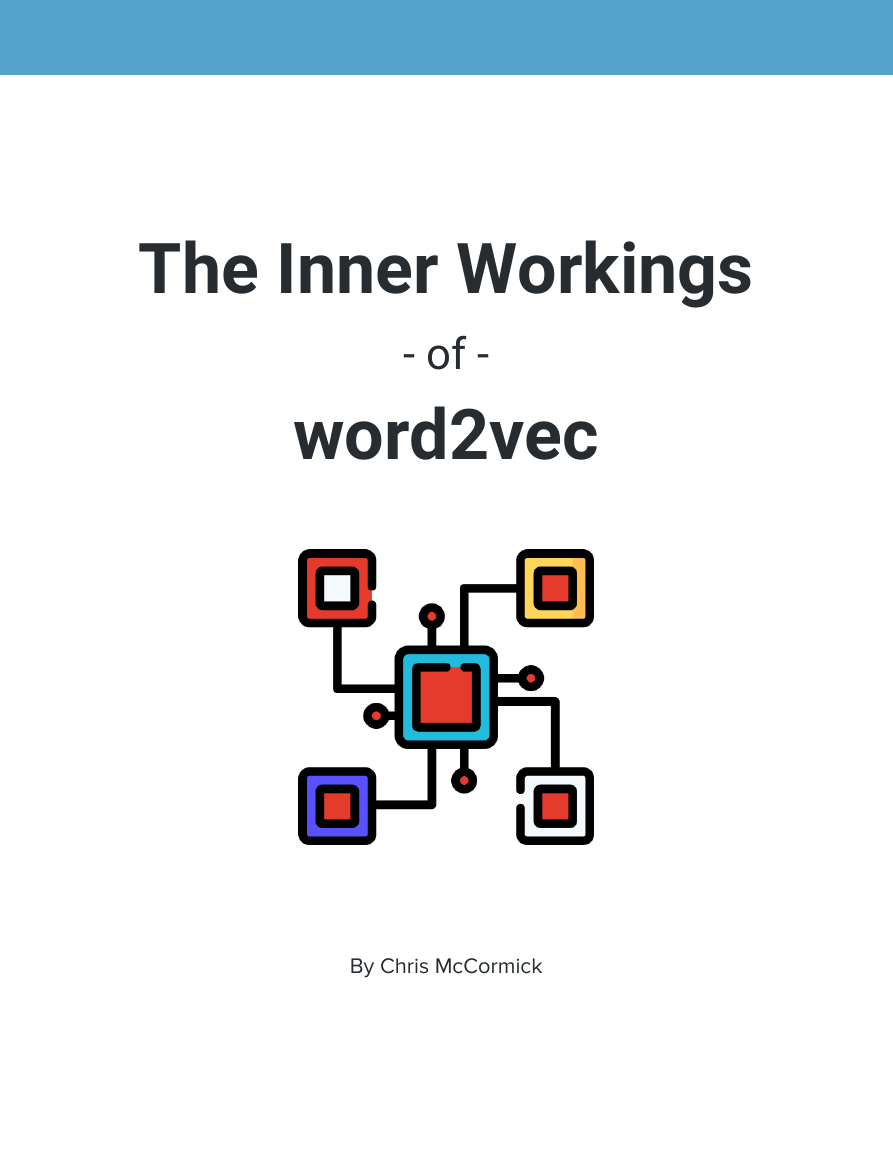
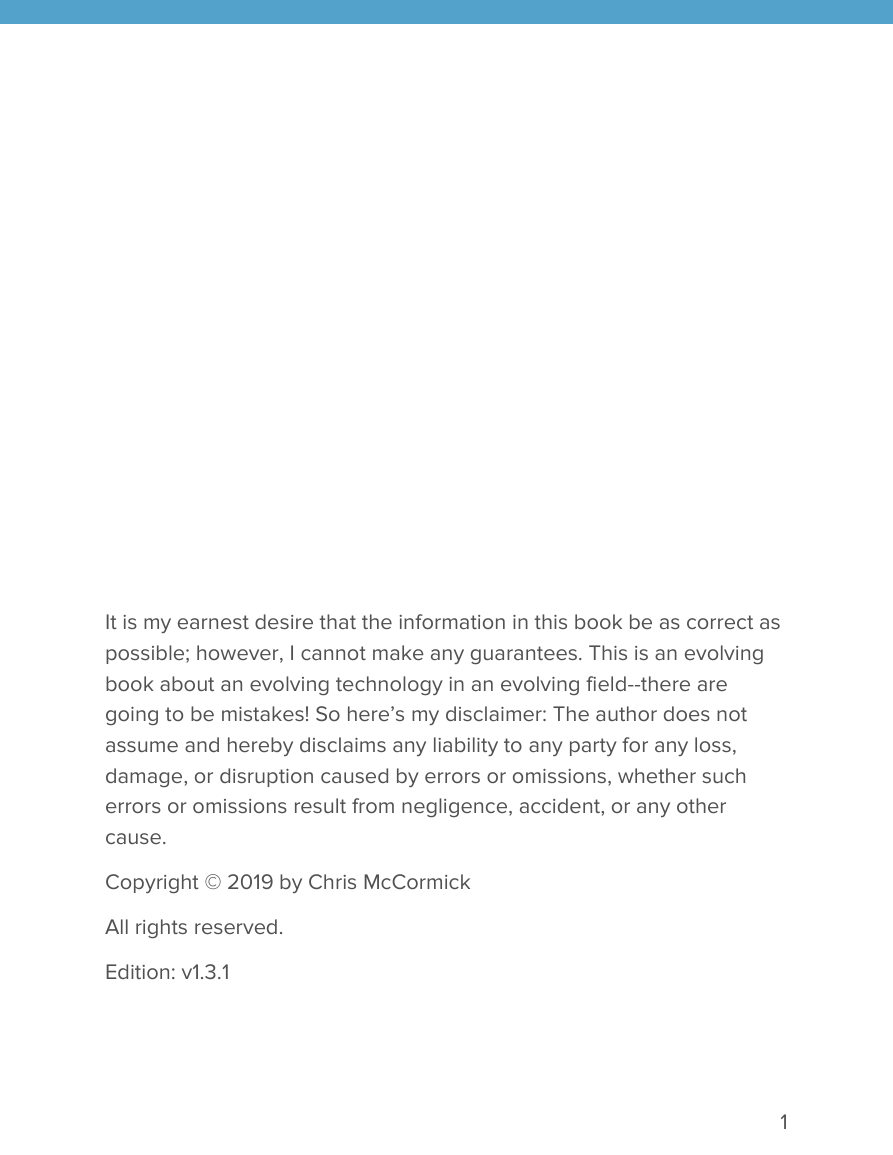
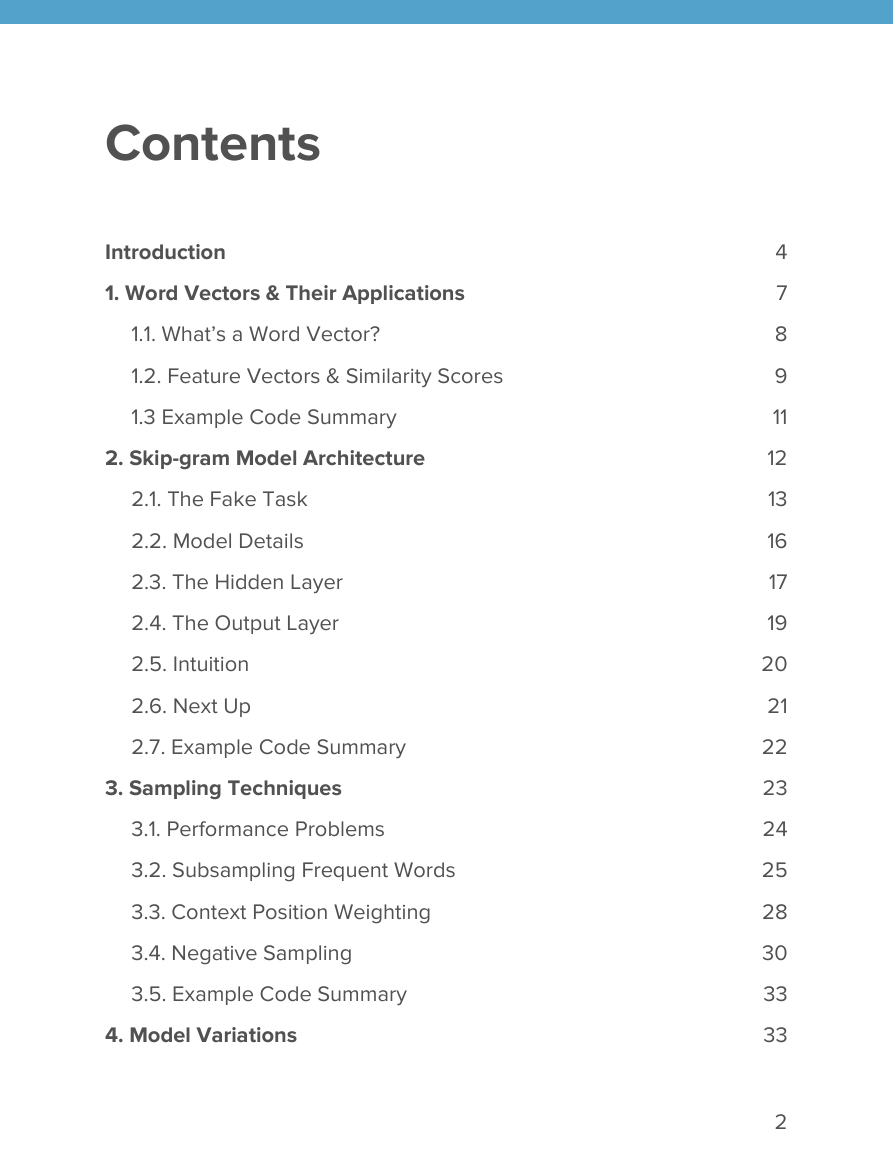
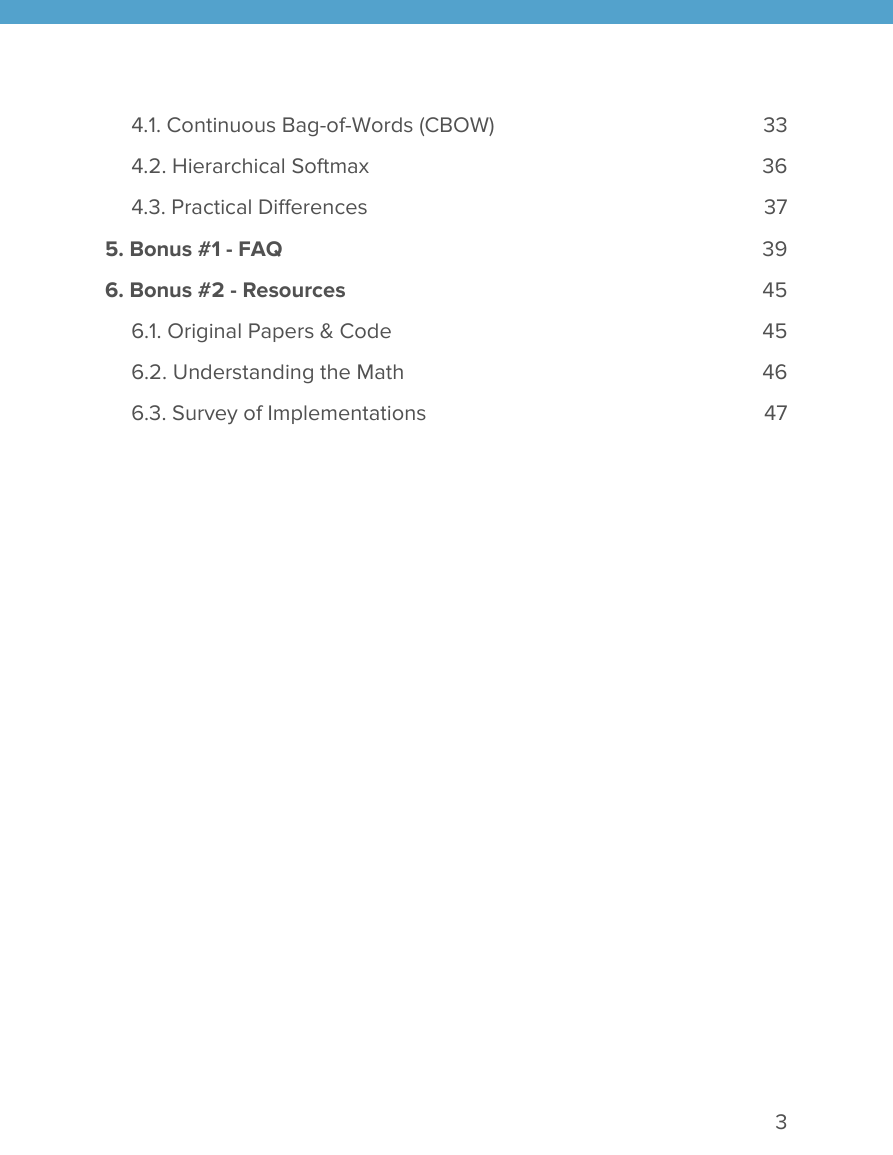

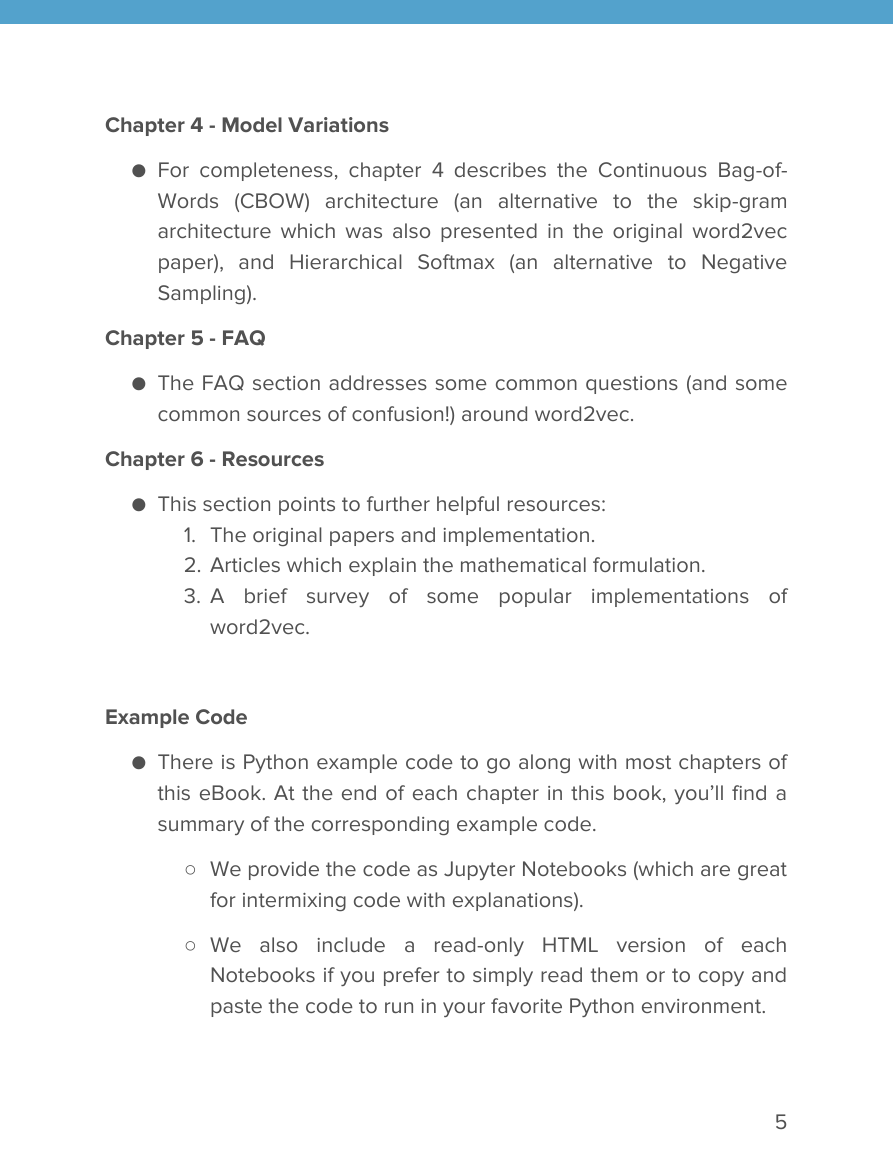
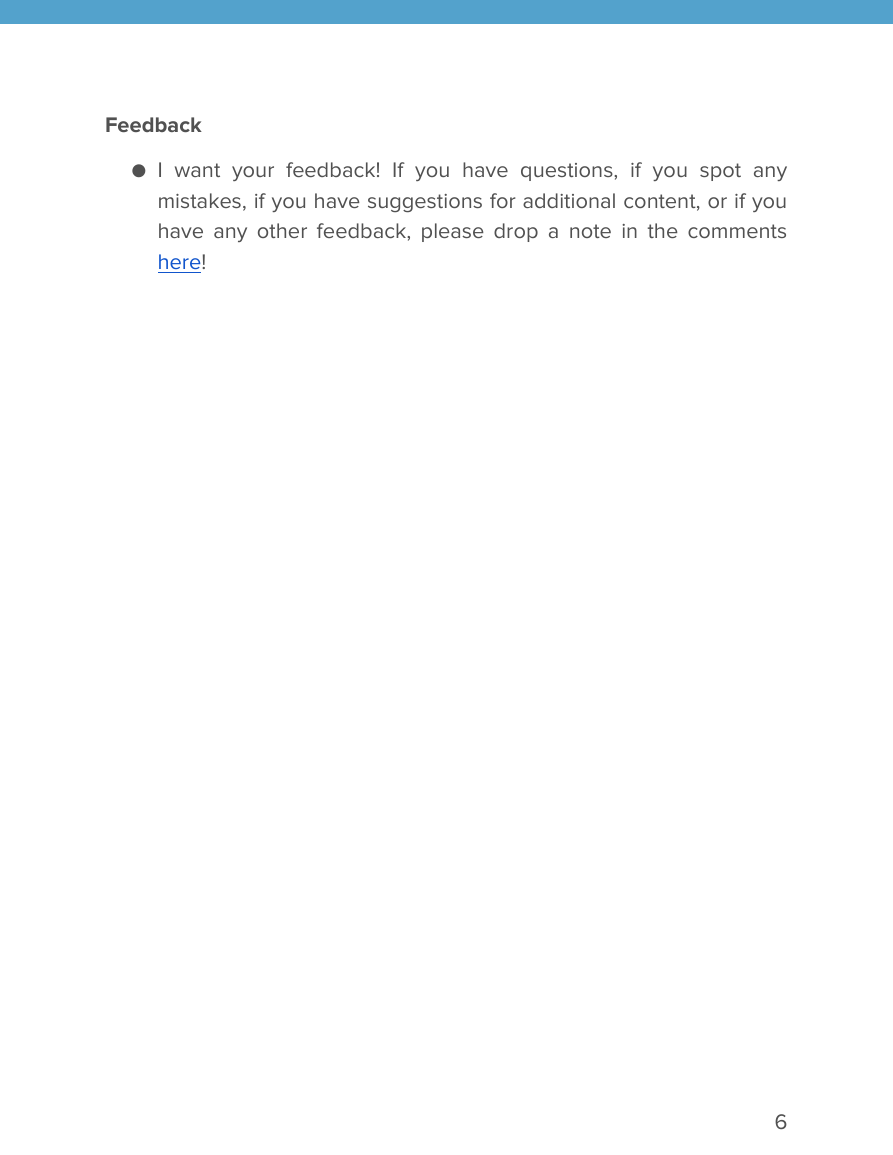
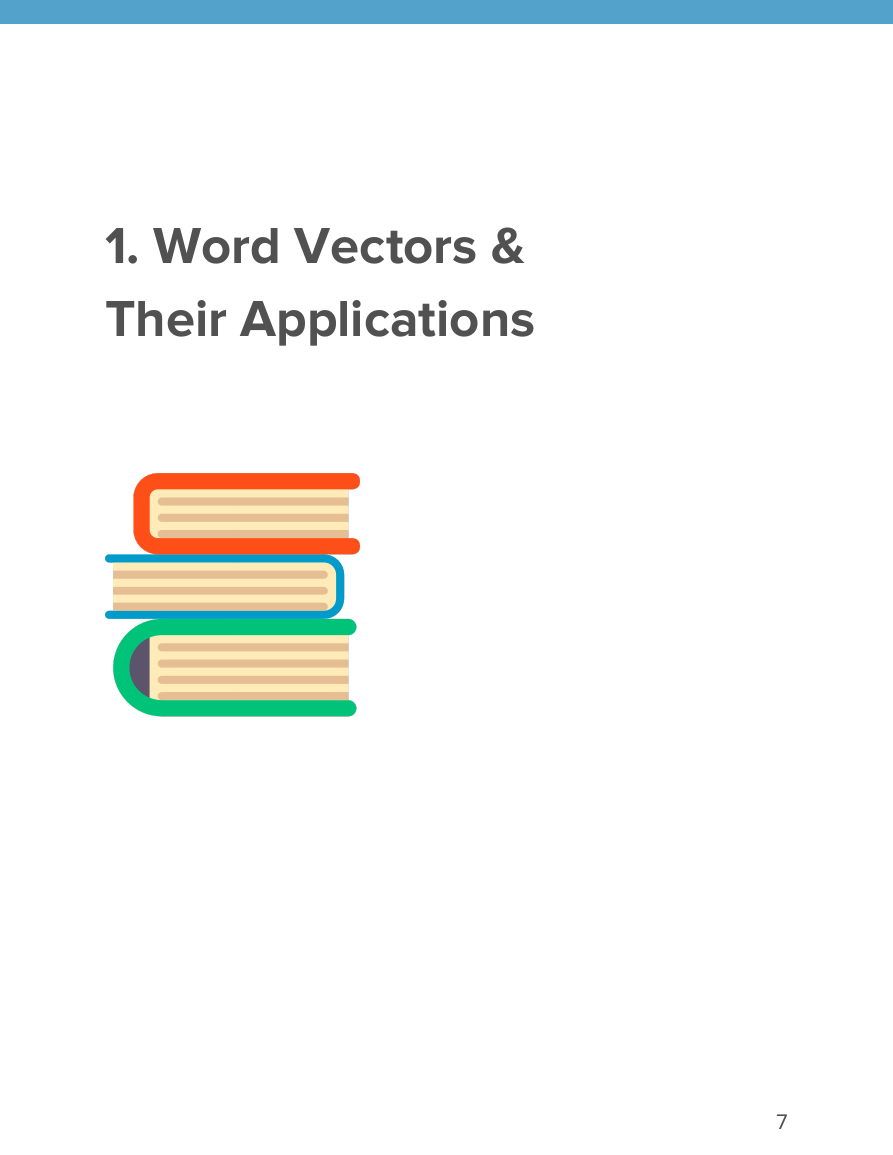








 2023年江西萍乡中考道德与法治真题及答案.doc
2023年江西萍乡中考道德与法治真题及答案.doc 2012年重庆南川中考生物真题及答案.doc
2012年重庆南川中考生物真题及答案.doc 2013年江西师范大学地理学综合及文艺理论基础考研真题.doc
2013年江西师范大学地理学综合及文艺理论基础考研真题.doc 2020年四川甘孜小升初语文真题及答案I卷.doc
2020年四川甘孜小升初语文真题及答案I卷.doc 2020年注册岩土工程师专业基础考试真题及答案.doc
2020年注册岩土工程师专业基础考试真题及答案.doc 2023-2024学年福建省厦门市九年级上学期数学月考试题及答案.doc
2023-2024学年福建省厦门市九年级上学期数学月考试题及答案.doc 2021-2022学年辽宁省沈阳市大东区九年级上学期语文期末试题及答案.doc
2021-2022学年辽宁省沈阳市大东区九年级上学期语文期末试题及答案.doc 2022-2023学年北京东城区初三第一学期物理期末试卷及答案.doc
2022-2023学年北京东城区初三第一学期物理期末试卷及答案.doc 2018上半年江西教师资格初中地理学科知识与教学能力真题及答案.doc
2018上半年江西教师资格初中地理学科知识与教学能力真题及答案.doc 2012年河北国家公务员申论考试真题及答案-省级.doc
2012年河北国家公务员申论考试真题及答案-省级.doc 2020-2021学年江苏省扬州市江都区邵樊片九年级上学期数学第一次质量检测试题及答案.doc
2020-2021学年江苏省扬州市江都区邵樊片九年级上学期数学第一次质量检测试题及答案.doc 2022下半年黑龙江教师资格证中学综合素质真题及答案.doc
2022下半年黑龙江教师资格证中学综合素质真题及答案.doc